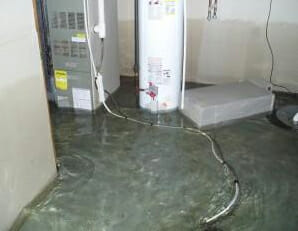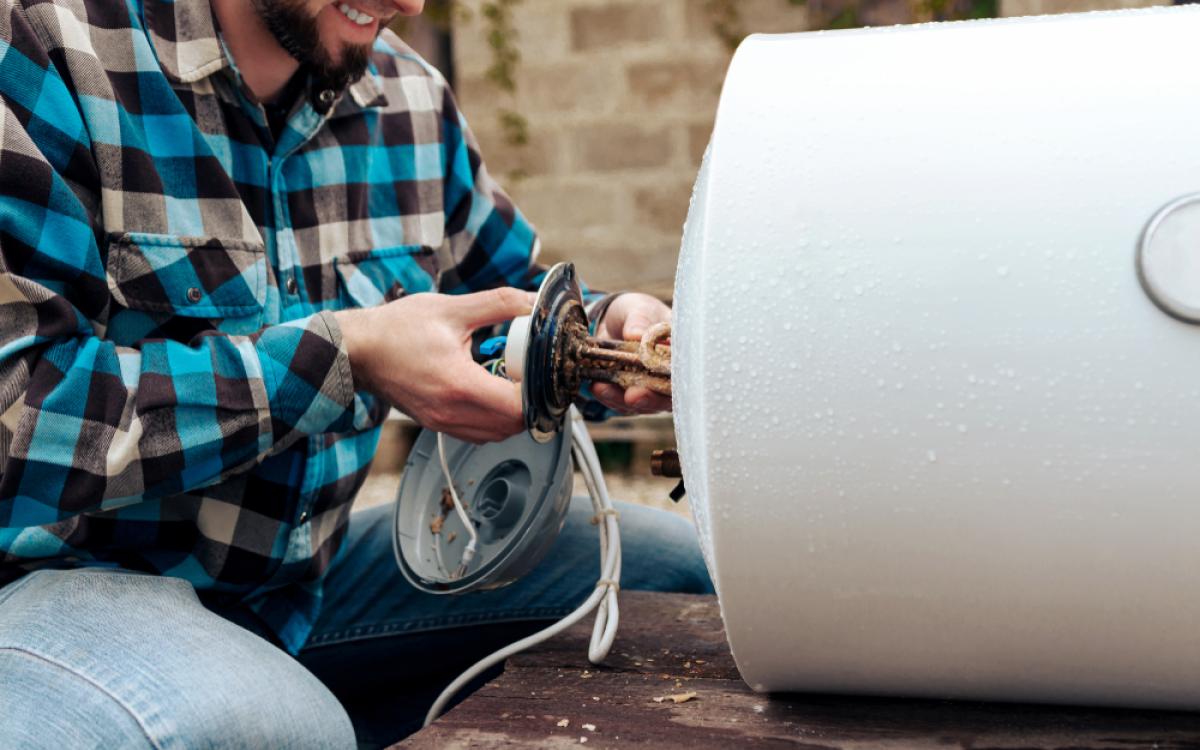Important Measures for House Owners Handling Broken Heating Units
Important Measures for House Owners Handling Broken Heating Units
Blog Article
We've unearthed this great article about Maintaining & Draining a Water Heater listed below on the net and accepted it made good sense to write about it with you over here.

Whether it lies in the basement or a different space, broken hot water heater can trigger stress. A typical system holds 80 gallons, so an over night leak will certainly result in a flooding. This results in major property damages with drenched wall surfaces and floorings. Besides, having no warm water supply is also bothersome. If you are managing these issues, remember of the following:
Call the Plumber
After doing the first 2 safety steps, you have to call your plumber to come right away to repair a fractured water heater. There are typically indications that your aging water heating system has debris buildup in the interior.
Don't wait for major flooding to call the plumber. By then, you will certainly need to invest even more to restore your residential property. Rather, as quickly as you identify these signs, have actually a professional involved check your hot water heater storage tank. Commonly, water heaters have a life-span of about 8 to 12 years. With regular examination as well as maintenance, you can lengthen its life.
Cut Off the Cold Water Supply
Cut off the tanks faucet water supply from the resource. This goes from your major water line into the storage tank. When your storage tank remains in good condition, the cold water quits filling up when the tank is full. Since it is dripping, the water will certainly proceed to move. Shut the shutoff discovered on top of the heating unit. Turn this clockwise to shut it off. You need to turn off that main water supply line outside your building if you can not discover it or reach it.
Shut Down Power Source
Prior to calling the plumber, shut down a gas water heater by transforming the temperature level dial. This is typically situated on top of the thermostat. Change off the circuit breaker if you have a design that runs on electrical power. This will certainly protect against electrocution, especially if there is a leak as water is a conductor. Usually, the heating element turns off when the water hits a details temperature. But with a busted storage tank, it might malfunction. Cutting it off guarantees you stay risk-free.
Tidy up Residential or commercial property
After calling the plumber, paper damage by bearing in mind and photos so you can claim your homeowner's insurance policy. From there, start the instant cleanup. Take out any important belongings to stop more saturating. Eliminate any type of standing water to stop mold and mildew as well as mold development. If you have a completely submersible water pump, make use of that to drain pipes the water. Otherwise, the conventional bucket approach will certainly likewise work. Try to wipe out whatever, including baseboards and also walls. Maintain them running to maintain air distributing if you have an electric fan and dehumidifier. This will certainly assist prevent mold development.
Remember, if you notice any type of concerns with your water heater, call the pros right away. You can not take this issue gently since a faulty thermostat can raise water temp to a hazardously high degree, bring about accidental burns. A damaged heater pressure relief valve can likewise cause a surge. For best results, obtain an annual check so your device gets evaluated, cleaned, drained pipes, and replenished, assuring ideal efficiency.
After doing the first 2 safety steps, you must call your plumber to come right away to fix a burst water heating system. Rather, as quickly as you find these indicators, have actually a specialist come to inspect your water heater storage tank. Prior to calling the plumber, closed off a gas water heating system by turning the temperature dial. If you have a submersible water pump, utilize that to drain pipes the water. Bear in mind, if you notice any problems with your water heating unit, call the pros right away.
8 REASONS YOUR HOT WATER HEATER IS NOT WORKING & HOW TO FIX
Water Heater Problems & Solutions
Loose or Damaged In-Line Valve
Unlike a water leak near the bottom of your water tank, a water leak on top of your system can be easily fixed. A common cause of water tank leaks includes a loose in-line valve. This is a handle that is located at the top of the water tank that is engineered to activate or deactivate the flow of water. To fix this problem, you will need to secure the nut that holds the ball or in-line valve in its location. If the leak becomes more severe once it is tightened, you will be required to travel to your local hardware store to purchase a new in-line valve for your water heater.
Damaged Pressure Relief Valve
Most types of water heaters are equipped with a pressure relief valve that is engineered to discharge pressure from the water tank when it becomes too high. If this valve on top of your water heater begins to leak, we recommend purchasing a new one online or from your local store. The process of removing and replacing pressure relief valves is not complicated.
No Warm Water
If you have an electric water heater in your home, the most typical cause of a lack of warm water is a broken heating element. Your water heater is equipped with two heating elements that are tasked with heating incoming water in the water tank. Once a heating element begins to malfunction, you will have little to no hot water to use for showering, cleaning, and laundry.
Low Supply of Hot Water
Are you continuously running out of warm water? This issue may be a byproduct of a cracked dip tube. This tube is engineered to push cold water to the base of your water tank to be heated. Once a crack or hole begins to form in the dip tube, the incoming supply of cold water may be released near the top or middle of your tank. As a result, the cold water on top of the tank will be sent to the faucets and showers in your house. This hot water heater problem can only be fixed by replacing the dip tube on your system. Since the process of installing a new dip tube is complex, we recommend calling a certified technician for help.
A low supply of warm water may also be a signal of excess sediment buildup in your water tank. As your water heater reaches the middle of its life cycle, minerals in water including magnesium and calcium will begin to collect at the base of the water tank. As the minerals continue to grow, there will be less room in the water tank to store hot water. To resolve this problem, flush your water heater to remove the excess minerals.
Water is Too Warm or Cold
If the water in your shower feels uncomfortable hot or cold, you can adjust the temperature of your water by changing the settings on your thermostat. Setting the temperature to 120 degrees Fahrenheit may help you save money on your utility bills. This is an excellent temperature to use if you’re worried about scalding or skin irritation. Does this temperature feel too cold? You may also adjust the thermostat to 140 degrees Fahrenheit to make your showers more pleasant. If your hot water heater is not working when you change the temperature, this is an indicator of a broken thermostat. Immediately find a certified plumbing or heating contractor in your area to repair or replace your thermostat.
Low Water Pressure
Low water pressure is not always caused by a malfunctioning water heater. If you live in an older home with smaller water pipes, the flow of water will be restricted prior to reaching our kitchen or bathroom skins. The only way to eliminate this hot water heater problem is to connect new ¾-inch water lines to your system. Another type of problem that may negatively impact your water pressure includes calcium deposits in water pipes.
As magnesium and calcium begin to form in your pipes, the diameter of your water lines will become smaller. As a result, the warm water from your water heater will not be able to travel in an efficient manner to your sinks or appliances. Since the process of replacing water pipes includes removing drywall, an average homeowner that does not have a plumbing license will not be able to fix this hot water heater problem.
https://www.wmhendersoninc.com/blog/8-reasons-your-water-heater-is-not-working-how-to-fix/

Do you like more info about Broken Water Heaters? Leave feedback down the page. We'd be glad to see your insights about this review. We are looking forward that you visit us again later on. If you enjoyed our blog posting please be sure to share it. Thanks a lot for your time. Kindly stop by our blog back soon.
Need Help? Hire Us Now! Report this page